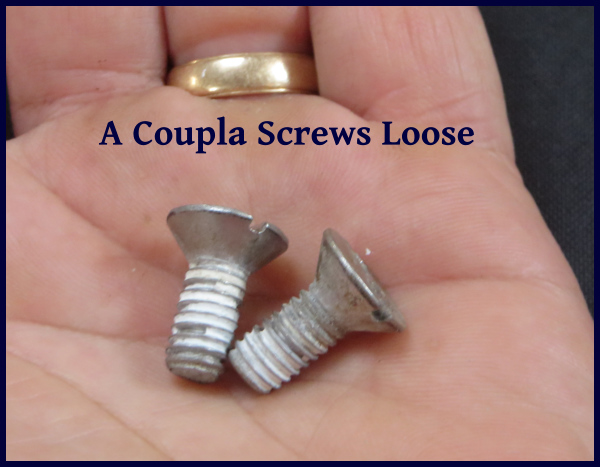The Blue View - A Couple of Screws Loose
/On passages, one of my morning rituals is to do a deck 'walk-around'. My morning watch starts at 0900, and after my morning cuppa, I take a walk around the boat, tossing the night's catch of flying fish overboard and checking for any potential problems. Any lines chafing? Are the dinghy and anchor still lashed and secure? How do the sails look – any issues? The stays and shrouds and other parts of the standing rigging are looking good? … and so on. On one morning's walk-around during our Trini-Puerto Rico passage I found two screws lying in the port side scuppers. Not a good sign and something that required immediate investigation. I had visions of the radar module coming loose from its mounting and self-destructing or the whisker pole coming apart and folding in half – after ripping a large hole in the yankee.

I remember talking to an avid racer who said that during a close race, one of his crew mates would sometimes use a slingshot to fire a screw or two into the mainsail of the boat they were trying to beat. The screws would drop to the deck, making enough noise to be noticed. At the very least, the crew would be distracted while trying to figure out where the screw came from and whether they were about to lose the rig. I'm not sure if it was BS or not, and even if it wasn't, I can't imagine the ploy working more than once, but it was a good story. At any rate, there were no boats within sight, so unless the screws I just found came from a drone, they were most certainly from Nine of Cups.
There were a few clues. The screws were just aft of midships in the port scuppers. This eliminated anything further aft, since it was very unlikely they rolled uphill from the place on deck that they landed. They were 5/16” diameter screws, eliminating stanchion screws. They were also coated in Tef-Gel, a substance I use to prevent galling and corrosion when I attach a stainless screw to aluminum – like the mast and boom. So, the most likely places to check were the mast, forward end of the boom, inboard end of the whisker pole, and the furlers. That's still a lot of possibilities.
I had removed the forestay in Trini so that Cups would fit on the Travelift, and this required partially disassembling the jib furler. I thought maybe I had neglected to tighten everything when I reattached the forestay – but everything looked good there. I checked all the screws on the boom and the lower part of the mast – all present and accounted for.

In the old days, the next step would be to lie on the foredeck with the binoculars and try to spot any missing screws further up the mast. Now, with digital cameras and great zoom lenses, it is much easier. I sit on the deck, zoom in and focus on a fitting, then shoot half a dozen photos. Next I review the photos, zooming in as much as possible to try to locate the screw-less hole. I spent a half hour or so carefully checking the possibilities, but still couldn't spot any missing screws.

As I was pondering where to check next, I grabbed the staysail furler to re-position myself. There, just below my hand, and not two feet from where I had been sitting for the last half hour, was the furler collar with an empty screw hole. I checked the other side of the collar, and sure enough, the second of three screws was missing. The third screw was partially unscrewed, but still in place. Had it come out, the result wouldn't have been catastrophic, but we wouldn't have been able to bring in the staysail when it was time. It took but a few minutes to put the screws back in place and tighten, and add a note in the log sheets to remove them, re-coat with Tef-Gel and tighten back in place once we arrived in Puerto Rico.


Later, as I was pondering how these three screws could have come loose, it occurred to me that last December, when we were getting ready to haul-out in Trini, I had loosened them in the event we had to remove the inner stay in order to fit into the Travelift at Power Boats. This is sometimes necessary, and we once tied up a haul-out facility for an hour or so while I worked on removing a seized screw - because I hadn't prepped the furler ahead of time. Not only had I forgotten I had loosened them, I had neglected to add it to my to-do list at the time. They weren't loose enough to notice during all my pre-passage checks, but were loose enough to work their way free. My bad.
I will make a note to add this to our splash checklist – if I can just remember where I put the damn list.

